Service Dogs 101
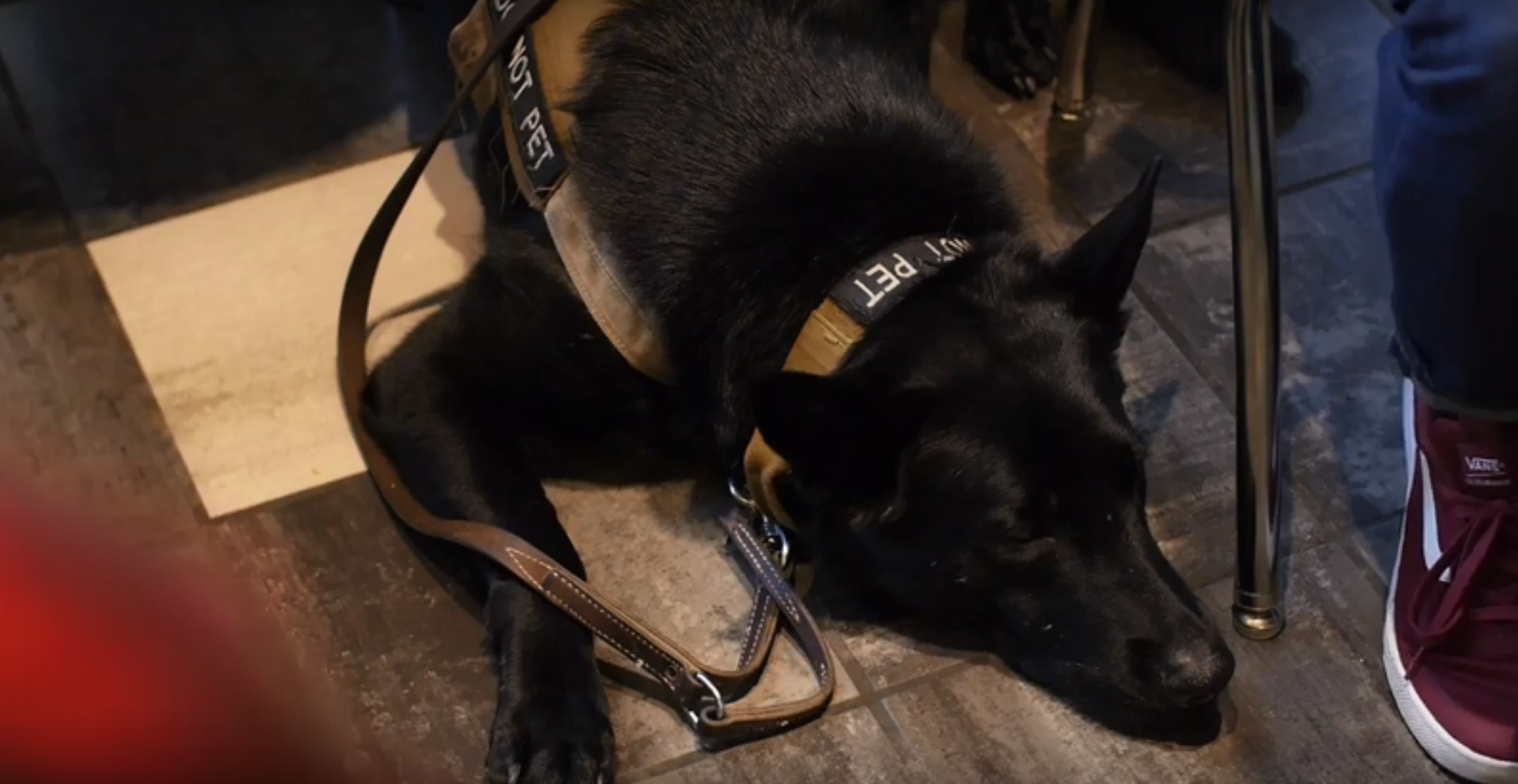
After an E-term class on the sociology of therapy and service animals, a group of Birmingham-Southern College students were inspired to educate others on the different types of support animals, and now their work is being seen nationwide.
The BSC students wrote, directed, and starred in a video, published and filmed by the National Center on Health, Physical Activity and Disability (NCHPAD). The final video, which explains the difference between service dogs and emotional support animals (ESAs), was released this September in honor of National Service Dog Month.
Service dogs work in teams — after extensive training, a service dog completes tasks that assist and protect the handler, an individual with disabilities. This bond forms the long-term “team” of a handler and his or her service dog, a connection that can often be misunderstood and legally complex.
Dr. Meghan Mills, assistant professor of sociology, developed her sociology class around the misunderstandings of support animals and the legal intricacies behind each type of animal. Her research focuses on these issues, and Mills herself is accompanied by her own service dog, Arrow.
“I think it’s an important social issue as more people use service dogs and as more laws change,” she says. “I’d definitely say that the prevalence of service dogs is increasing. There’s more interest in how they can help different disabilities.”
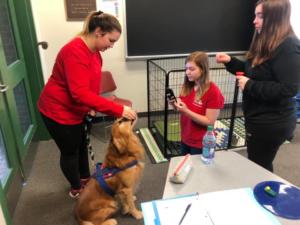 When Mills first came to BSC, she pitched the idea for the class. She partners with Hand in Paw, a nonprofit organization that trains therapy dogs, allowing students to work with dogs in the class. Students take part in training exercises, observe therapy animal visits at Children’s Hospital and the Exceptional Foundation, and hear more about Mill’s own research on the sociology of service dogs and disability law.
When Mills first came to BSC, she pitched the idea for the class. She partners with Hand in Paw, a nonprofit organization that trains therapy dogs, allowing students to work with dogs in the class. Students take part in training exercises, observe therapy animal visits at Children’s Hospital and the Exceptional Foundation, and hear more about Mill’s own research on the sociology of service dogs and disability law.
For junior religion and sociology major Olivia Seckinger, learning the difference between the types of support animals was extremely impactful. The animals that college students have for emotional support in their dorm rooms do not have the training that therapy dogs and service dogs must have. These differences are what she focused on as the student director of the NCHPAD video.
“We wanted to create something that could benefit everyone outside of our campus, but this is also a huge issue on our campus,” Seckinger says. “Not many people know the difference between these kinds of support animals. We wanted the video to help students on BSC’s campus.”
Seckinger wrote the script for the video, which features two teams of handlers and service dogs: junior Austin Cooper with Fitz and Hannah Collier ’19 with Arrow. Collier worked as Mills’ TA and knew Arrow well enough to complete tasks with him. Amelia Guarino ’19 and her emotional support cat, Colby, are also featured in the video.
The video follows students and faculty who learn how to treat service dogs and presents the proper etiquette surrounding teams. Service dogs only complete tasks for their handler, and, unlike what most people believe, there is no legal registration that has to be shown for a service dog in a public place.
“I was interested in the difference between service dogs and emotional support animals and how they help people, especially since some people lie and use it as an excuse to have a pet on campus,” Seckinger says.
As Mills explores in her course and her research, the increase in handlers with support animals comes with an increase of people who lie about their needs. The false representation, in turn, leads to a greater amount of questioning towards service dog handlers and discrimination of those who truly need them.
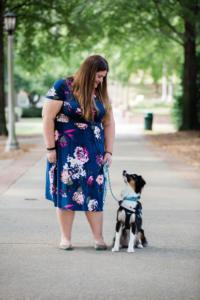 “I’m interested in visible versus invisible disabilities as a sociologist. Some people get more questions of legitimacy,” Mills says. “Falsely presenting pets as service animals because of convenience can be detrimental to real teams.”
“I’m interested in visible versus invisible disabilities as a sociologist. Some people get more questions of legitimacy,” Mills says. “Falsely presenting pets as service animals because of convenience can be detrimental to real teams.”
Seckinger says that she’s seen a noticeable increase in the amount of support animals on campus, especially ESAs who stay in residence halls. Depending on the disability, service dogs and ESAs can be helpful for an individual’s wellness, and more professionals are recognizing that.
“When barriers exist in the campus environment that present challenges for students accessing academics, programming, activities, events, and living in the residence halls, then utilizing service animals and assistance animals may be valuable for students,” says Angie Smith, coordinator of academic accessibility services.
Outside of the classroom, Mills continues to bring awareness to these social issues due to this growing frequency of support animals. She leads professional development and legal education sessions through Children’s Hospital and St. Vincent’s, since medical professionals need to be aware of the facts but can also sometimes be the least aware. Mills leads Arrow in a demonstration and speaks about her personal story, all as volunteer work to educate the community.
“It’s harder because they’re dogs, but service dogs are medical equipment. You wouldn’t pet or greet a wheelchair,” she says. “You have to see the person before the animal.”
To learn more about having a support animal on BSC’s campus, reach out to Angie Smith at [email protected] or [email protected].





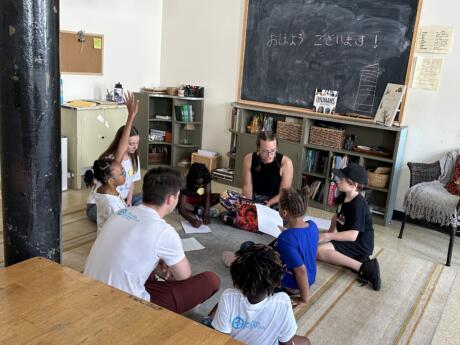
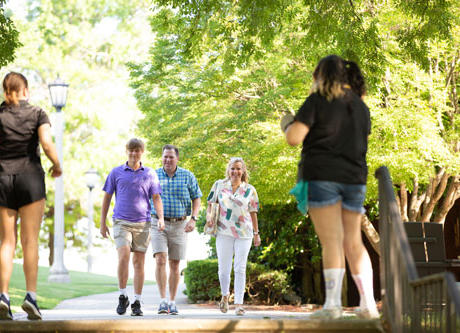
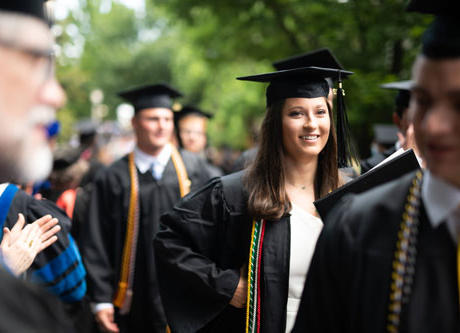



// Comments are closed //